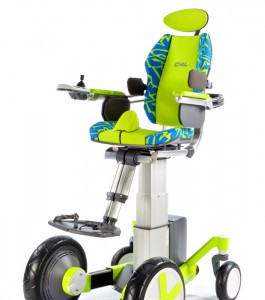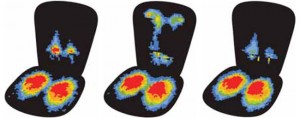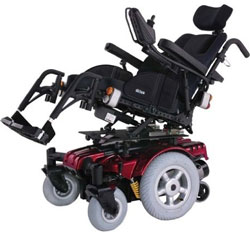It is often the case with many a soap opera episode that the opening story leads on to a bigger issue that takes up the remaining time of the episode before reaching resolution at the end.
My Charity Insights project, much like many a research project, is beginning to resemble such an episode. The problems with current wheelchairs as identified at the outset have swiftly revealed a deeply related and possibly more fundamental issue with wheelchairs. The seat, the undeniably most important wheelchair component, is fundamentally flawed.
It’s a problem rehabilitation hospitals and companies alike have been trying to solve for decades. How do you design a seat that is applicable to the widest spectrum of users? Current wheelchair seats range from the very basic foldable fabric sling seat used predominantly by people unable to walk but able to use their upper body and arms, to the carer-propelled custom-moulded foam seat used almost everywhere at the Royal Hospital for Neuro-disability (RHN). Between those options there is a plethora of seat designs incorporating space age hydrophobic covers and countless repositionable cushion pads. Each has their pros and cons. The question is what factors are you trying to maximise and minimise for a particular patient?

In the case of the patients cared for by the RHN, there are two important functions the seat must serve. The first is that the seat must maintain the patient’s correct posture as in most cases they do not have the ability to maintain that correct posture on their own. The second function is inseparable from the first and attempts to solve a problem able-bodied people will likely never have.
Consider a wooden park bench and a padded armchair. Which would you rather spend 3 hours sitting on non-stop? I would hope you would find the armchair more comfortable, and the reason is fairly obvious. It’s not simply that the armchair is softer. Instead, it deforms to spread your weight more evenly over your rear and back, while a flat hard bench doesn’t deform at all and creates pressure points over the bony areas of your rear. The result is that you will find yourself shifting around on the bench more often than on the armchair to move the maximum pressure point away from the part that is aching.

Now consider this. A wheelchair patient at the RHN remains seated for around 3 hours between rests, when they are hoisted out of their wheelchair and onto a bed perhaps. A flat hard wheelchair seat will be more than just unconformable after a while. Alongside excess moisture and friction, prolonged high pressure over a particular part of the body results in the development of a pressure sore over that area, which can take months to heal. For patients who are unable to shift themselves in their seat, the current solution is to spread the weight as evenly over their body as possible by moulding a seat that is unique to that patient’s body. Even this design has limitations as it is only effective when the patient remains perfectly still all the time. There will always be some movement, even if it is as simple as the patient sliding downwards a little. The majority of high-end wheelchairs feature a tilting mechanism that allow the entire seat to pivot, relieving the posterior from carrying the entirety of the patient’s weight, and instead placing some of it on the back.

My main aim this week was to find out more about this seat problem, the current solutions and possible solutions for the future. This has involved a close examination of the current seat moulding method used at the hospital, and an investigation into alternative techniques. The aim is to develop a universally applicable device that can be used to prescribe a more effective seat design that better distributes the patient’s weight and is more versatile to changes in the patient’s body as their condition develops.
I have a lot of research paper digging to do!
Great goods from you, man. I’ve understand your stuff previous to and you’re just extremely fantastic. I actually like what you’ve acquired here, really like what you’re stating and the way in which you say it. You make it entertaining and you still take care of to keep it wise. I can not wait to read far more from you. This is really a tremendous website.